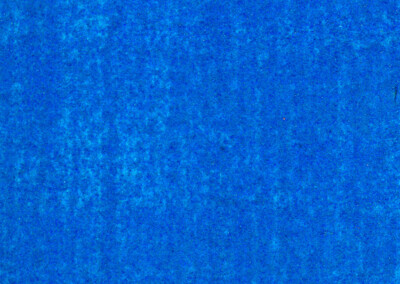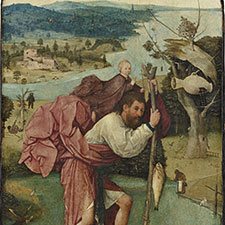Hieronymus Bosch, Ecce Homo
ca 1475-85Paintings sorted by Historical period | Painter | Subject matter | Pigments used
Overview
Hieronymus Bosch, Ecce homo is a not altogether usual depiction of this biblical scene (John, 19:5). In many other paintings, the scene is located indoors while Bosch painted it on the outskirts of a city.
The painting was thoroughly investigated by The Bosch Research and Conservation Project. The results of this investigation were published in a magnificent book referenced in the section “Recommended Books” below. An extensive interactive online feature at the website of the project complements the book and shows all the images from the book in high resolution.
The pigment analysis revealed a limited palette consisting of the usual pigments employed in the Renaissance period, such as azurite, lead-tin yellow, vermilion, red and green lakes, and also gold leaf.
Medium: Oil
Support: Oak
Size: 71,1 × 60,5 cm
Art period: Renaissance
Städel Museum, Frankfurt, Germany
Inventory number: 1577
Painting at the website of the BOSCH PROJECT
Story in the Bible
John 19:5
“Then came Jesus forth, wearing the crown of thorns, and the purple robe. And Pilate saith unto them, Behold the man!”
Pigments
Pigment Analysis
This pigment analysis is based on the work of the scientists at The Bosch Research and Conservation Project (1). The scientists employed X-ray radiography (XRR), infrared photography (IRP), and infrared reflectography (IRR) to gain insights into the inner layers of the painting and to identify the pigments.

1 Christ’s blue robe: azurite.
2 Hem of the white coat: lead-tin yellow.

3 Rays emanating from Christ’s head and golden lettering: gold leaf.

4 Fire in the torch: brown background, lead-tin yellow, vermilion, and red lake.

5 Statue at the end of the bridge: grey base, followed by lead-tin yellow in the lighter parts and lead white highlights. The shadows are accentuated by a red lake.

6 Red hat: vermilion.

References
(1) Luuk Hoogstede, Ron Spronk, Matthijs Ilsink, Robert G. Erdmann, Jos Koldeweij, Rik Klein Gotink, Hieronymus Bosch, Painter and Draughtsman: Technical Studies, Yale University Press, 2016, pp. 182 – 191.
Pigments Used in This Painting
Resources
See the collection of online and offline resources such as books, articles, videos, and websites on Hieronymus Bosch in the section ‘Resources on Painters‘
PowerPoint Presentations
Painter in Context: Hieronymus Bosch
A richly illustrated presentation on the painting technique and pigments employed by Hieronymus Bosch specially crafted for Art Education. (Number of Slides = 20)
- Each presentation starts with the basic resources on the painter such as his biography, main catalogs of his paintings, and a bibliography.
- Next, you find slides describing the painting technique of the artist and the pigments he usually employed in his work.
- The majority of the slides show examples of paintings containing the specific pigments.
Slides showing the basic resources on the life and works of the Northern Renaissance painter Hieronymus Bosch.
The painting technique and all pigments employed by Bosch are shown in the next slides.
The majority of the slides show important examples of paintings where Bosch employed specific pigments. The slides are organized according to the color of the pigments.
Videos
Video: 'Ecce Homo' by Rami Rakhman
Video: 'Ecce Homo' by Jheronimus Bosch
Publications and Websites
Publications
(1) Matthijs Ilsink, Jos Koldeweij, Hieronymus Bosch, Painter and Draughtsman: Catalogue Raisonné, Yale University Press, New Haven and London 2016, pp 224-235.
This book is also available online in pdf format in two parts: part I and part II.
(2) Luuk Hoogstede, Ron Spronk, Matthijs Ilsink, Robert G. Erdmann, Jos Koldeweij, Rik Klein Gotink, Hieronymus Bosch, Painter and Draughtsman: Technical Studies, Yale University Press, 2016, pp. 182 – 191.
Websites
Website of the Bosch Project
Website of the Bosch Research and Conservation Project



























